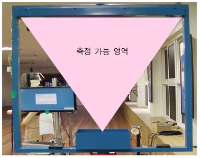It has been known that β-alanine supplementation induce the increment of carnosine in vivo and was effective in delaying fatigue by buffering the hydrogen which was formed during exercise. This study was designed to investigate the effects of 4 weeks of β-alanine supplementation on physical fitness and blood lactate concentration in middle school soccer players. Nineteen middle school soccer players were randomly assigned to either one of two groups, i.e., β-alanine group (n=10) and placebo group (n=9). Subjects in β-alanine group consumed β-alanine 2 g/day during 1st and 2nd week, as well as 3 g/day during 3rd and 4th week, whereas subjects in placebo group consumed maltodextrin in the same manner. All subjects ate same menu and trained same amount at the same training camp during the intervention period. Body composition, aerobic capacity, anaerobic capacity, isokinetic function, and blood lactate concentration during maximal GXT were measured at pre- and post-test. Main results of the present test were as follows: 1) Fat mass and percent body fat decreased significantly in β-alanine group. 2) No significant changes were found in variables related to aerobic capacity in both groups. 3) Average power increased significantly in β-alanine group. 4) Isokinetic muscular endurance increased significantly in β-alanine group. 5) Blood lactate concentration did not change in eithet group; however, blood lactate concentration immediately after maximal GXT in β-alanine group tended to be increased more than placebo group. It was concluded that β-alanine supplementation would have positive effects for improvement of body composition, anaerobic capacity, and muscular endurance in middle school soccer players.

The purpose of this study was to investigate basal physical fitness and smash speed of elite national badminton players. To perform this study, total forty six korea national badminton player were participated : twenty two male players(age : 20.90±2.24years, height : 179.30±5.40cm, weight : 73.80±7.12kg, career : 11.27±1.88years) and twenty four female players(age : 19.45±1.95years, height : 167.83±4.36cm, weight : 61.39±3.60kg, career : 9.50±2.47years). Each subjects performed the 6 basal physical fitness trials : agility, muscular endurance, muscular strength, flexibility, balance and cardiorespiratory endurance. And the speed of badminton smash were analysis by using radar gun when players were standing smash success. To determine the difference between two groups, independent samples test was used. As a result, we found that there was a large difference male players and female players in basal physical fitness and smash speed. First, male players were significantly strong in agility(side step 10%), muscular endurance(repetitional jump 12%), muscular strength(left grasping power 3%, right grasping power 31%) and cardiorespiratory endurance(20m suttle run 31%). On the other hand, female players were relatively strong in flexibility(sit and reach 27%) and balance(standing on one leg with eyes closed 51%). Second, maximum smash speed show that male players were about 57km/h(24%) faster than female players(male : 247.72km/h, female : 190.37km/h). Based on the findings, we shall be applicable training program to improve flexibility, balance of male athletes and agility, muscular endurance, muscular strength, and cardiorespiratory endurance of female athletes. our results will be appliable to improve the athletic performances of national badminton players by the coaches in the future.


The importance of a health problem is emphasized in youth. Unfortunately, healthy activity physical education is not well utilized and is not popularly being researched. In order to improve these problems, this study attempted to explore the validity and applicability of SPARK program by designing and practicing the SPARK based P.E. classes. This study employed a mixed method research method based on a qualitative research strategy. Physical activity and physical fitness level were measured by accelerometers and FITNESSGAM. Additionally, empirical data were collected and analyzed by both Photovoice technique and recording. Findings of this study were divided into designing and practicing perspectives. First of all, the PE classes based on SPARK program was designed by 2009 national physical education curriculum and studies associated with the SPARK program. Further, I attempted to specify teaching strategy for enhancing physical activity level, power of execution and motivation. Second, PE class which has higher physical activity level, more participation and achievement, and successful fulfillment were emerged as consequences. Based on the study results, I discussed the validity and applicability of Physical Fitness based SPARK program and proposed suggestions for future studies.









PURPOSE This study assessed elite Taekwondo athletes’ physical fitness and developed reference standards for both their basic and specialized physical fitness. METHODS Data for analysis were collected from 870 athletes: from national teams, 123 elite Taekwondo athletes from the Performance Analysis and Assessment System (PAAS) administrator website (1999–2020); from regional sports centers, 731 collegiate and general division elite Taekwondo athletes (2015–2019); and from Y University, 16 elite Taekwondo athletes. Through measurement items’ selection and categorization, 20 physical fitness items were selected for the reference standards’ development, including 9 for basic fitness and 11 for specialized fitness. Taekwondo weight classes were divided into two: light + middle (fin, fly, bantam, feather) and middle + heavy (light, welter, middle, heavy). RESULTS Descriptive statistics for basic and specialized physical fitness items were categorized by gender and athletes’ fitness level. The reference standards’ development was aligned with existing standards, integrating the Cajori physical fitness 5-levels. It also introduced minimum physical fitness reference standards and target achievement reference standards for evaluating elite Taekwondo athletes’ physical fitness. CONCLUSIONS The reference standards proposed here can serve as objective indicators in selection of national representative athletes and also provide foundational data to establish fitness goals and evaluate future elite athletes’ physical fitness.
PURPOSE This study aims to investigate the effects of a 12-week equipment-based Pilates training on physical fitness, cardiovascular function, and vascular endothelial function in obese middle-aged women. METHODS Twenty-four women, aged 30-40 years with a body mass index ≥ 25 and percent body fat ≥ 30% were randomly assigned to one of two groups: the Pilates training group (TR; n=12); and control group (CON; n=12). The TR participants underwent three 50-minute equipmentbased Pilates training sessions per week for 12 weeks. Participants in the CON maintained their normal life patterns for the same intervention period. Variables regarding physical fitness, cardiovascular function, and vascular endothelial function were measured and compared pre-test and post-test u a two-way ANOVA with repeated measures. RESULTS The main results of the study were as follows: 1) Regarding physique and body composition, participants’ body weight, body mass index, fat mass, percent body fat, waist circumference, hip circumference, and waist-to-hip ratio decreased significantly in the TR. 2) Regarding physical fitness, muscle strength, muscular endurance, flexibility, and cardiorespiratory endurance increased significantly in the TR. 3) Regarding cardiovascular response, SV increased significantly in the TR. 4) Regarding vascular endothelial function, blood vessel diameter at rest and during vasodilation as well as blood flow volume during vasodilation decreased significantly in the CON, resulting in a significant interaction between group and test in FMD percentage. CONCLUSIONS It was concluded that the 12-week equipment-based Pilates program improved the physical fitness and vascular endothelial function in obese middle-aged women.
PURPOSE This study investigated the effect of non-linear periodization strength training on basic and professional fitness of national cross-country skiers. METHODS The body composition (height, weight, BMI, body fat %), basic physical strength (grip strength, lung capacity), anaerobic power (peak power, average power), graded exercise test (maximum heart rate, running time, VO2max, lactic acid), isokinetic strength (trunk strength), and 1RM (bench press, dead-lift, squat, shoulder press, leg curl, bicep curl, cable triceps extension) of nine national cross-country skiers (male: 5, female: 4) were measured. All analyses were performed using SPSS 25.0, Kruskal-Wallis H tests were applied to observe the changes by training methods. Mann-Whitney U tests were used as Post Hoc. RESULTS The results indicated that running time and VO2max post-test improved compared to that for the pre-test for graded exercise test. The lumbar extension strength of the post-test was higher than that for pre-test. There was no significant difference in other variables. CONCLUSIONS It is suggested that nonlinear periodization strength training can be expected to improve running time, VO2max, and trunk strength for cross-country athletes; however, it does not affect the overall changes.
Purpose The purpose of this study was to find out the physical characteristics of Wushu athletes by comparing the differences on the results of physical fitness between the male athletes of the Wushu national team Taolu and the Sanda group. Methods Measurement of basic and professional fitness based on muscle function, targeting 37 men Wushu national team players (24 taolu, 13 Sanda) in the selection and evaluation contests twice in 2018 and 2019. Body composition, isometric muscle strength, flexibility and equilibrium, anaerobic power, and isokinetic muscle strength. The fitness factors were divided into two groups, Taolu and Sanda. Results First, body fat rate of the Sanda athlete group was significantly lower than that of the taolu athlete group (p<.01). Second, in the isometric muscle strength category(back muscle strength, grip strength), the Sanda athlete group had higher muscle strength than Taolu athlete group, but there was a statistically significant difference only in the left grip strength (p<.01). Third, in terms of flexibility and equilibrium, the taolu players were significantly higher in all items(p<.001). Fourth, in the anaerobic power, the taolu athlete group had higher both the peak power and the mean power, and there were a significant differences(peak power: p<.01, mean power: p<.001). Fifth, isokinetic muscle strength was significantly higher in the right knee flexion of the taolu athlete group (p<.01), and lumbar extensor muscle was significantly higher in the Sanda athlete group (p<.05). Sixth, in the isokinetic strength ratio, the knee flexion ratio of the Sanda athlete group were significantly higher on the left and right knee flexion and extensor ratios (p<.05). In addition, in the lumbar flexor and extensor ratios, the group of Sanda athlete group were significantly higher on the lumbar extensor(p<.05). Seventh, there was no significant difference between two groups in isokinetic muscle power. Conclusions The results of this study can be used as basic data to improve the efficiency of technical and physical training through the analysis of the characteristics of Taolu and Sanda. The effectiveness of this training will help to improve the performance.
Purpose The purpose of this study was to investigate the effects of aerobic exercise intensity on body composition, health related fitness, and quality of life in elderly women. Methods 48 elderly women over 65 years of age without physical and mental problems were assigned to four groups: control group, low intensity, moderate intensity, and high intensity aerobic training group. The aerobic exercise group applied a heart rate reserve (HRR) to low-intensity group (HRR 40-55%), moderate intensity group (HRR 55-70%), high intensity group (HRR> 70%) for 12 weeks, 3 times a week for 20 minutes a day. Subjects of the control group were to maintain their usual lifestyles during the same intervention period. Body composition, health related fitness, and quality of life were measured and analyzed using repeated two-way ANOVA. Results The main results obtained in this study are as follows. 1) There was a significant decrease in sitting forward bending in the low intensity group and a significant increase in EQ-VAS. 2) There was a significant decrease in body weight, BMI, and 6 minutes walking in the moderate intensity group, and a significant increase in grip strength and EQ-VAS. 3) The high intensity group showed a significant decrease in weight, BMI, waist circumference, sitting forward bending, and 6 minutes walking, and a significant increase in grip strength, sit and stand, functional reach, and VO2max. On the other hand, there was no significant change in all variables in the control group. Conclusions In conclusion, aerobic training was found to be effective for body composition, health related fitness and quality of life in elderly women. In particular, it can be concluded that high intensity aerobic training is effective for health related fitness, and low and moderate intensity aerobic exercise is effective for improving quality of life.
Purpose This study was conducted to analyze the differences of physical characteristics focused on the physique, strength, and power for cycling national athletes (Sprint cyclists and Road race cyclists). Methods We measured various factors (e.g., height, weight, body fat ratio, thigh circumference, waist circumference, anaerobic power, isokinetic muscular strength, muscle power, squat jump by 1RM intensity, and so on) for a total 11 male cycling national athletes (5 Sprint cyclists and 6 Road race cyclists). Results First, the body composition showed the significant differences only in weight (p=0.31) and BMI (p=.001) for Sprint cyclists. Second, the values of the anaerobic power for the Sprint cyclists were significantly higher than those for the Road race cyclists only at peak power (p=0.28), whereas there was no significant difference in average power, isokinetic muscular strength, and muscle power between the two groups. Third, the isokinetic trunk flexion muscle (p = .016) for the Sprint cyclists were significantly higher than those for the Road race cyclists. Fourth, the significant difference in Time to Peak Torque was not found between two groups. Fifth, the values for the Sprint cyclists showed the significant difference in all 5 intensity groups (0%, 30%, 50%, 60%, and 80%) (p=.001) of the squat jump. Also, there was a statistically significant difference only in 0% velocity between the two groups, except for exercise intensity. Conclusions From the various measures between two groups, the Sprint cyclists relatively showed the high weight, BMI (muscle mass), and maximum power. Additionally, the isokinetic trunk flexion muscle and the squat jump were higher in the Sprint cyclists than the Road race cyclists. These data may be used as basic data to improve the physical fitness factors related to the athletic performance of the athletes by reflecting them in the effective training plan and evaluation of the athletes.
Purpose The present study compared physical fitness, metabolic syndrome risk factors, and resting metabolic rate (RMR) according to body mass index (BMI) and percent body fat (%BF) in 20s females. Methods Fifty-one women in their 20s were recruited and assigned into three groups, i.e., normal group (n=18), normal weight obesity (NWO) group (n=18), and obesity group (n=15) according to BMI and %BF. Physical fitness, metabolic syndrome risk factors, and RMR were measured and compared among three groups. Results Main results were as follows: 1) Physical fitness were not significantly different among three groups. 2) Regarding 1-RM, arm curl and leg extension were significantly lower in normal group and NWO group than obesity group. Leg press was significantly lower in normal group than obesity group. 3) Regarding metabolic syndrome risk factors, there were significant differences in waist circumference, ordering from low to high such as normal, NWO, and obesity groups. Systolic blood pressure and diastolic blood pressure were significantly lower in normal group and NWO group than obesity group, while HDL-C was significantly higher in normal group than NWO group and obesity group. 4) Regarding RMR, absolute values of RMR such as VO2(㎖·min-1), RMR (Kcal·min-1), RMR (KJ·min-1), and RMR (Kcal·day-1) were significantly lower in normal group and NWO group than obesity group. On the other hand, relative value of RMR such as RMR (KJ·kg-1FW·h-1) was significantly higher in normal group than NWO group and obesity group. Conclusions It was concluded that obese women showed increased risk of metabolic syndrome and low relative RMR level, and NWO had similar problems. Active health management through physical activity and dietary control should be committed to NWO individuals because the NWO has possibility of high risk of metabolic syndrome and reduction of metabolic rate from 20s even though there was no problem in their external appearance.